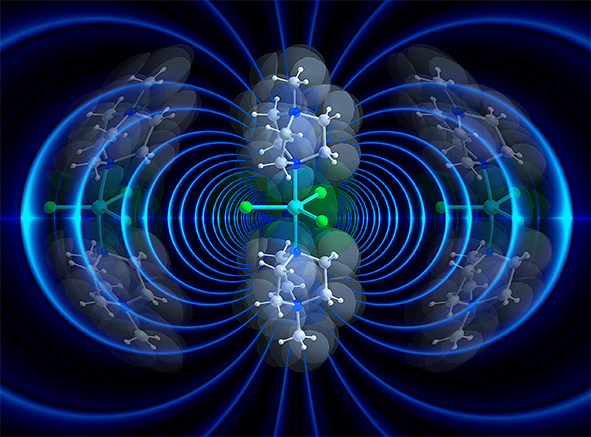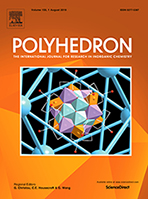Molecular Magnetism
Welcome to the web pages of the Murrie research group
 Our research interests are in the synthesis & characterisation of molecular materials that display novel magnetic, optical or switching properties. Our expertise is in the area of single-molecule magnets.
Our research interests are in the synthesis & characterisation of molecular materials that display novel magnetic, optical or switching properties. Our expertise is in the area of single-molecule magnets.
We would like to thank the following for funding:
EPSRC; The Science and Technology Facilities Council; The University of Glasgow; The Nuffield Foundation; The Carnegie Trust for the Universities of Scotland and SYNERGY.
News:
September 2020
** We generate a new air-stable pseudo-D5h Dy(III) Single-Molecule Magnet (Ueff = 1108 K, TB = 14 K) by combining a weak equatorial ligand field from a macrocyclic LN5 ligand with a strong axial ligand field. Based on our synthetic blueprint, we use ab initio calculations to show the vast scope for macrocyclic engineering of magnetic anisotropy.
Chem. Commun., 2020, DOI: 10.1039/D0CC04559D **
May 2020
** The first trigonal bipyramidal Fe(II) complex to display slow relaxation of magnetisation has been isolated, with this behaviour found to arise through a combination of a large magnetic anisotropy (D = −27.5 cm−1) and a pseudo-D3h symmetry at the Fe(II) centre, as investigated through ab initio and magnetic studies.
Chem. Commun., 2020, DOI: 10.1039/D0CC02382E **
January 2020
** A new air-stable sulfur-ligated Dy(III) single-ion magnet has been successfully isolated with Ueff = 638 K and hysteresis loops open up to 7 K. In silico studies show that the S co-ligands significantly boost the axiality and that Te- and Se-donors have the potential to further enhance the magnetic properties.
Chem. Commun., 2020, DOI: 10.1039/C9CC07292F **
July 2019
** Combining a strong linear axial ligand field with a weak equatorial ligand field, by using the polydentate ligand LN6, reveals for the first time the exceptional uniaxial magnetic anisotropy possible for D6h symmetry and opens up a route to further air-stable higher-order symmetry single-molecule magnets.
Angew. Chem. Int. Ed., 2019, DOI: 10.1002/anie.201907686 **
see also the ChemRxiv version published in May 2019 https://doi.org/10.26434/chemrxiv.8100509.v1
May 2019
** An in-depth experimental and theoretical study of [CoCl3(DABCO)(HDABCO)] reveals a large easy-plane magnetic anisotropy (D = +44.5 cm-1) with a negligible rhombic zero-field splitting (E) due to the strict axial symmetry imposed by the C3 symmetric ligand and trigonal space group.
Chem. Sci., 2019, DOI: 10.1039/C9SC00987F **
April 2019
** We report a new nine-coordinate, air-stable Dy(III) single-ion magnet. Our in silico studies demonstrate that through carefully modulating the ligand electronics, the axiality can be boosted to generate Ucal barriers of over 600 K. Chem. Commun., 2019, DOI: 10.1039/C9CC00965E **
September 2018
** Moya wins a prize for best poster at the 16th International Conference on Molecule-based Magnets, held in Rio de Janeiro in Brazil **
July 2018
** We report two new air-stable axial Dy(III) single-ion magnets, [Dy(H2O)5(HMPA)2]Cl3·HMPA·H2O (1) and [Dy(H2O)5(HMPA)2]I3·2HMPA (2) (HMPA = hexamethylphosphoramide), which exhibit magnetic hysteresis that remains open up to 9 K for 1@Y and 10 K for 2@Y, respectively. Chem. Commun., 2018, DOI: 10.1039/C8CC03929A **
Jan 2018
** We show how the giant magnetic anisotropy that we observe in trigonal bipyramidal Ni(II) changes under high pressure. We demonstrate that the combination of high pressure techniques with ab initio studies creates a powerful tool that gives a unique insight into the design of systems that show giant magnetic anisotropy: Chem. Sci., 2018 DOI: 10.1039/C7SC04460G **
